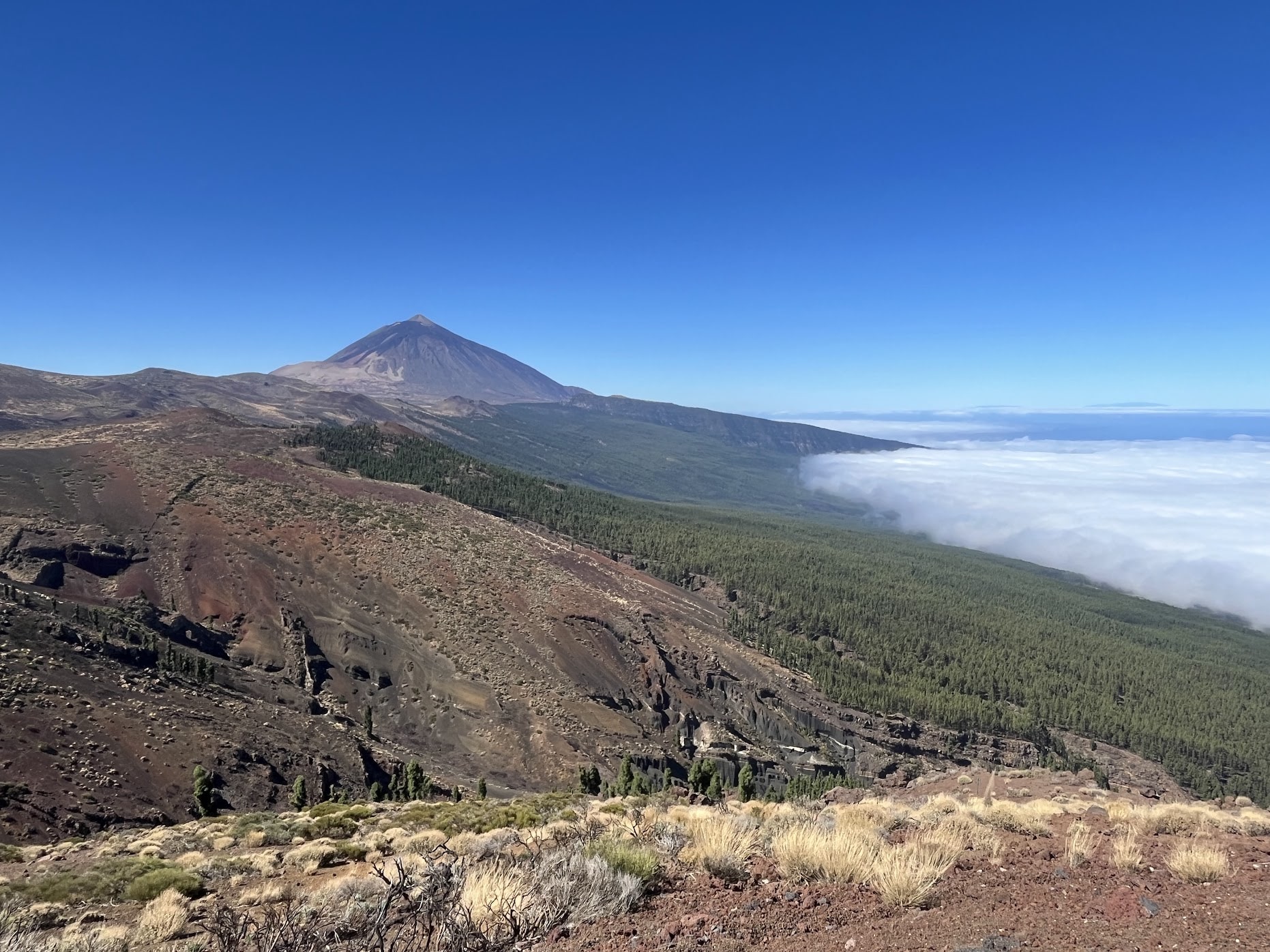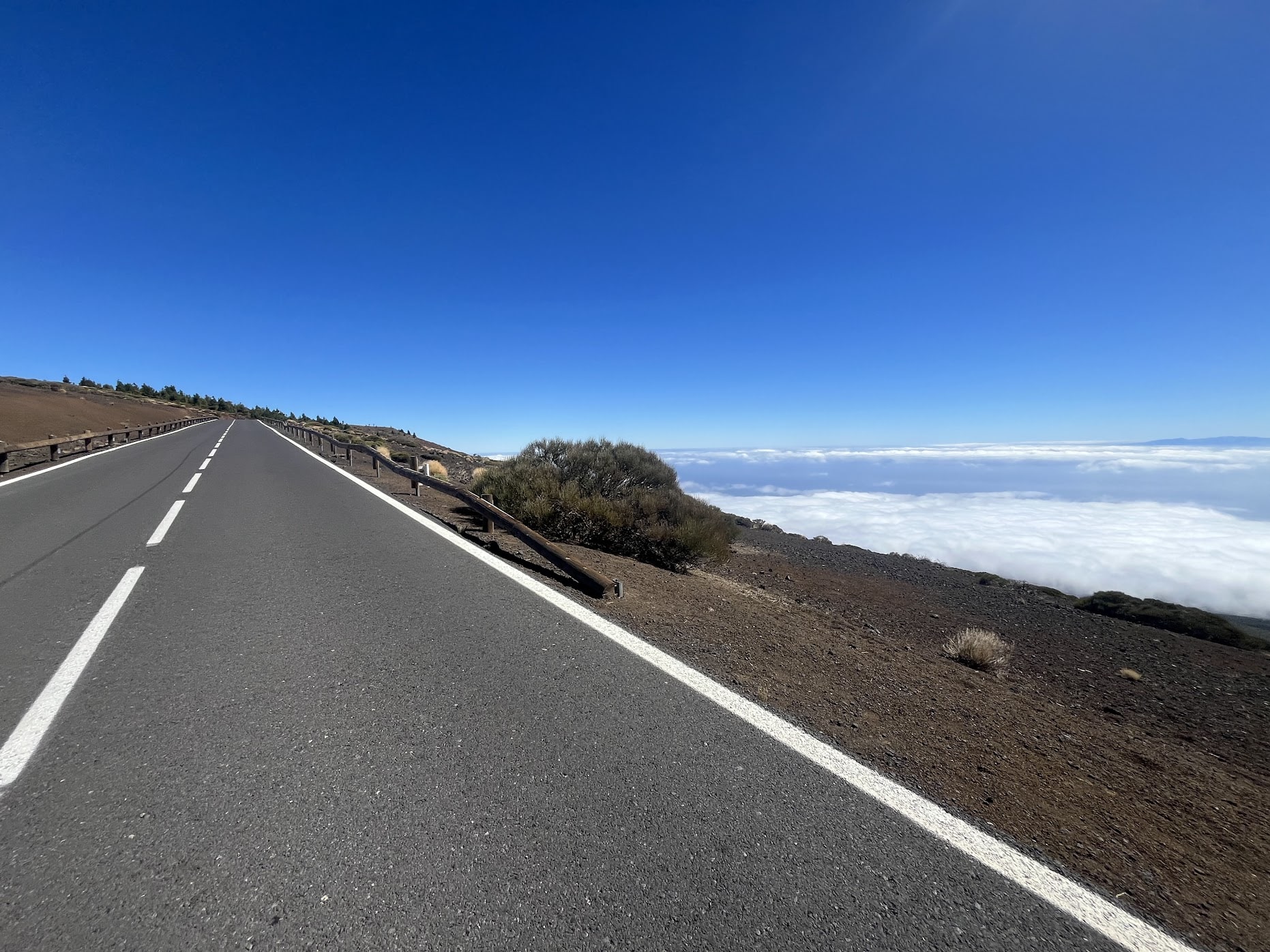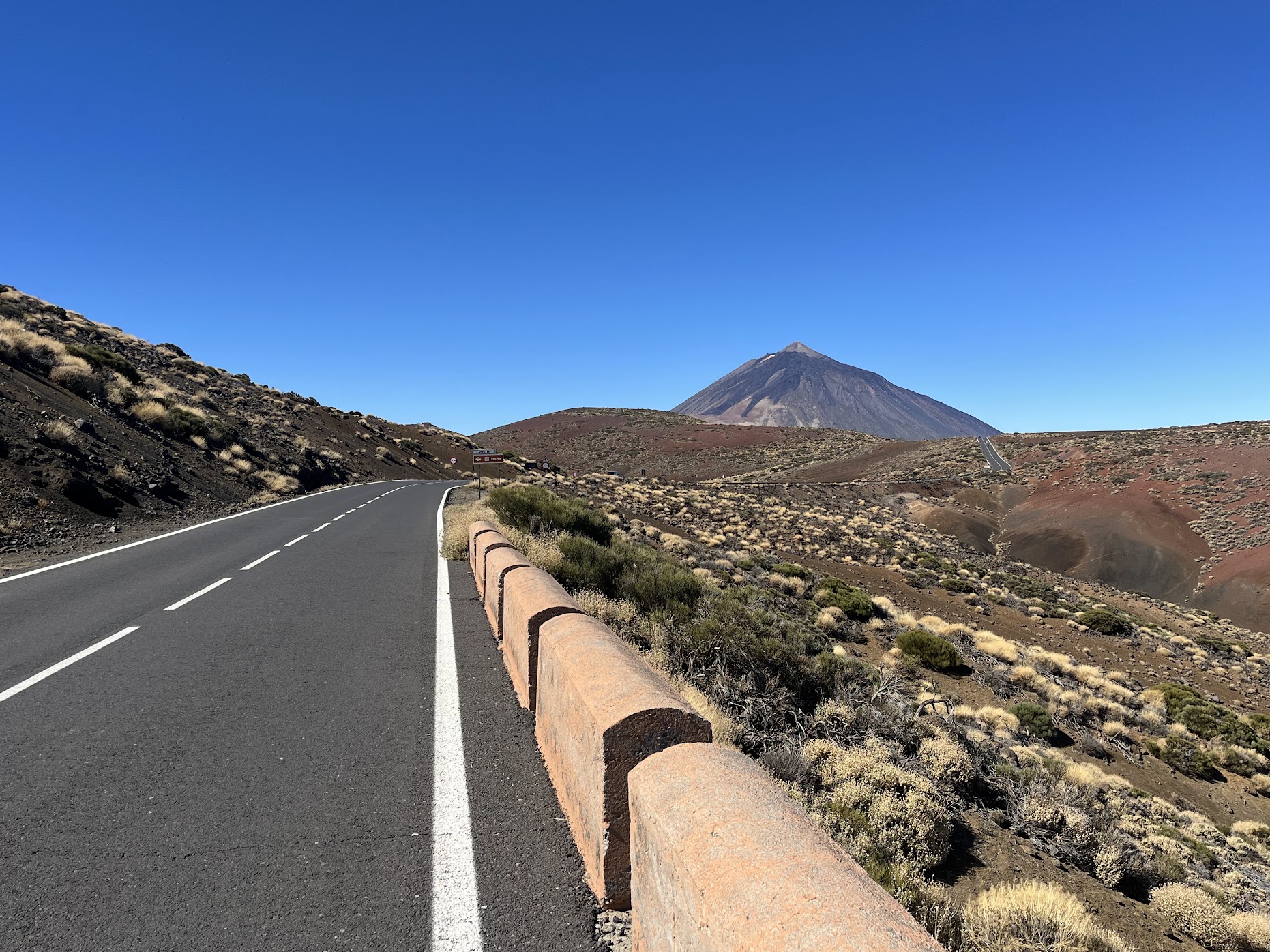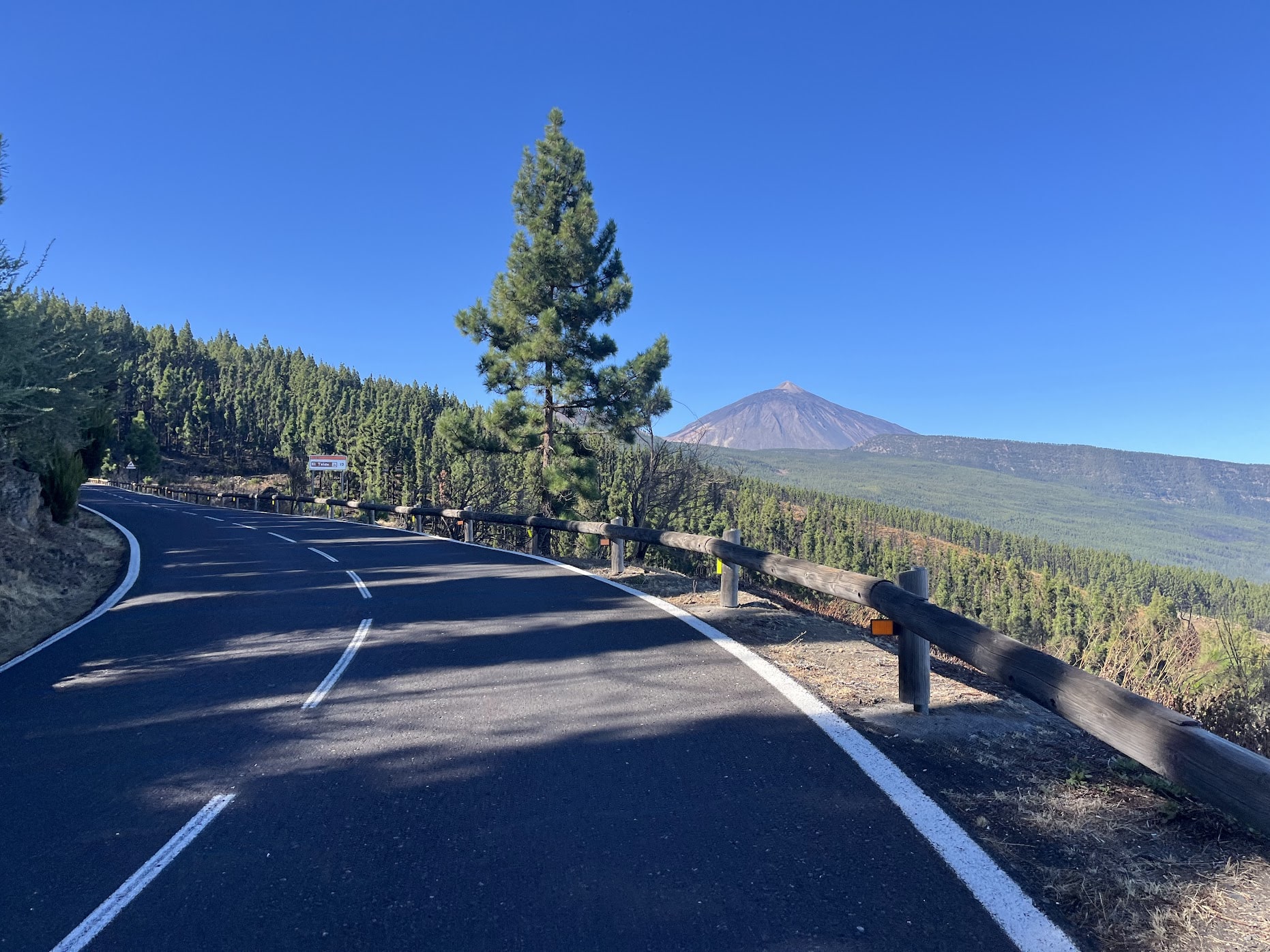Teide from Puerto de la Cruz (via La Esperanza)
The route
This challenging route takes you up Mount Teide first, then descends northeast before turning off at La Esperanza to return to Puerto de la Cruz. At 120km with 3,000m of climbing, it’s slightly shorter than the western loop but not necessarily easier - this northern side throws steeper ramps at you and can feel more demanding, though it offers different scenery and a unique perspective on Tenerife’s diverse landscapes.
Starting from Puerto de la Cruz, the route begins with the same epic climb to Mount Teide, Spain’s highest peak at 3,715 meters. The first part of the climb takes you through the lush northern slopes of the island, passing through the historic town of La Orotava with its architectural and colonial heritage, offering stunning views of the Atlantic Ocean.
As you gain altitude, the landscape transforms dramatically. The lush vegetation gives way to the unique volcanic terrain that makes Tenerife so special. You might find yourself riding through mist for a stretch, before climbing higher than the clouds and emerging into a moonlike landscape that you won’t find in many places.
The climb to Teide via this northern approach averages 4-7%, with steeper ramps of 8-9% thrown in that really test your legs. While the average gradients and distance are roughly similar to the western side, this route has its own character. The abundance of trees lining the road offers welcome protection from the sun - a luxury the exposed western side barely provides. The northern side also features plenty of corners that keep you engaged and make the time pass faster, unlike the straighter western approach. It’s 50km of climbing, but the variety keeps it interesting.
One silver lining: traffic on this northern side is marginally better than the western route. The bends and curves naturally restrict speeds, preventing drivers from going completely mad - though obviously, some still seem intent on testing that theory and putting cyclists at risk. You’ll find some restaurants on the lower parts of the climb, and there’s even a mini market in Chasma where you can stock up on supplies.
As you continue climbing and finally enter the cañada - a vast crater or plateau in the shadows of Mount Teide’s peak, which towers 1,400 meters above the road’s highest point at 3,715 meters. Here you’ll find the popular cable car station that ferries tourists to near the summit, and a hotel-restaurant that serves as a winter altitude training camp for professional cyclists. The volcanic landscape provides ample evidence that Teide is far from dormant - you’ll ride past old lava streams still strikingly black, with informative signs along the roadside marking the dates of past eruptions. The scenery is truly breathtaking - for those whose breath hasn’t already been taken away by the altitude.
Once in the caldera, you’ll reach the cable car base, then backtrack and take a right turn towards the observatory. You’ll find yourself on an arrow-straight road that just keeps going at an altitude of 2,200 meters. It’s a surreal experience riding this endless ribbon of tarmac through the volcanic landscape. The summit comes at the observatory after about 50km of climbing - time to rest those legs for a few minutes, you’ve earned it.
The descent towards La Laguna and Santa Cruz brings 4 more bumps to tackle. They’re short and relatively insignificant compared to what you’ve just climbed, but after that monster ascent, they feel surprisingly hard. Your legs are spent, and even these small climbs demand more than they should.
Once you’re back in civilization around, you’ll face the usual chaos of Tenerife’s busy traffic. Drivers doing incredibly stupid and dangerous things become the norm again - be prepared to test your brakes to their very limits. Stay alert and defensive. The key turning point comes at La Esperanza, where you’ll turn off the main route to head back towards Puerto de la Cruz. This section takes you through some of the island’s beautiful countryside with rolling hills and traditional Canarian villages.
Fueling up
Stock up well in Puerto de la Cruz before you start, but the northern route is better provisioned than the western side. You’ll find some restaurants on the lower parts of the climb, and there’s a mini market in Chasma where you can grab supplies mid-climb. Once you enter the cañada, there are a few more restaurants and hotels at the cable car station.
On the descent towards La Laguna and Santa Cruz, you’ll find plenty of options as you get back into populated areas. La Esperanza is a good place to refuel with cafes and restaurants before the final stretch back to Puerto de la Cruz.
There are no fuentes along the route as far as I could see, so bring cash to buy supplies when needed. While this northern side has more options than the west, you’ll still want to plan your stops carefully for the 50km climb.
Tips
Safety first: As mentioned in the warning section on the Tenerife starting page, traffic is insane on this island, not in small part caused by the endless hordes of irresponsible and reckless tourists. While the climb itself benefits from bends that restrict driver speeds somewhat, once you’re back in civilization around La Laguna and Santa Cruz, it’s back to chaos. Make absolutely sure your brakes are in perfect condition - you’ll need them. Stay visible with reflective gear and lights, and keep your wits about you at all times.
Navigation: Study the route carefully. In the caldera, after reaching the cable car base, backtrack and take the right turn towards the observatory. Later, the turnoff at La Esperanza is crucial - it’s easy to miss and you don’t want to end up continuing towards Santa Cruz. Bring a GPS device or detailed map for navigation.
Pacing: Don’t underestimate this route. The steeper ramps of 8-9% on the northern side make it tougher than the western approach, and those 4 small bumps on the descent will hurt more than you expect after 50km of climbing. Start early to allow plenty of time. Pack extra layers for the descent, as temperatures can drop significantly at 2,200+ meters altitude. Take breaks to enjoy the unique landscapes, but keep moving - this is a long, demanding day in the saddle.



